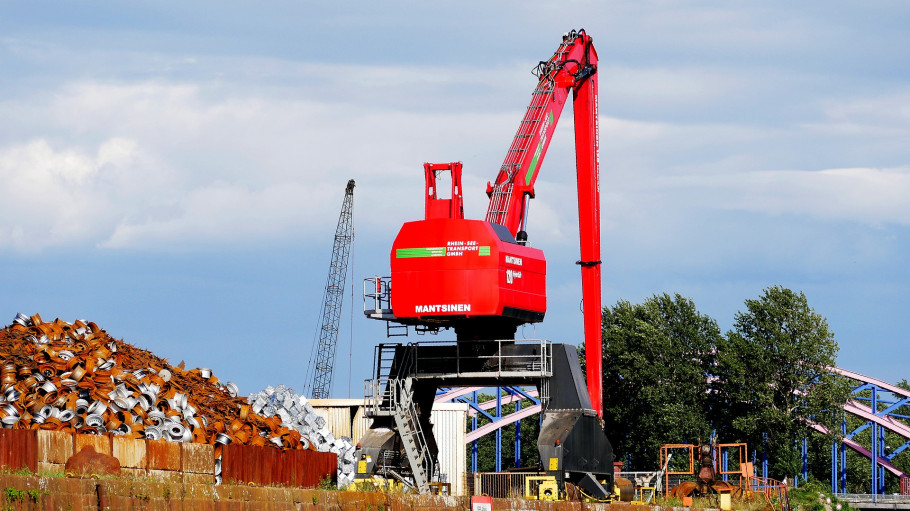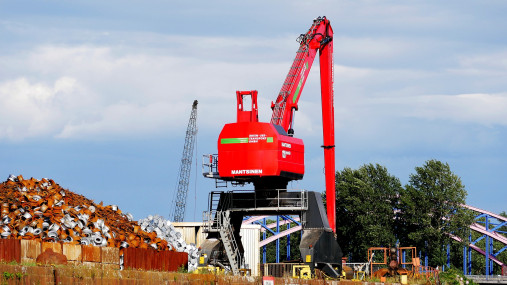
Publications » Position papers » Joint industry statement on the Revision of the Waste Shipment Regulation
Joint industry statement on the Revision of the Waste Shipment Regulation
Downloads and links
Recent updates

Europe’s ferrous and non-ferrous metals sectors call on the European Commission to maintain its ambition of fully addressing the environmental and social impacts of EU waste exports through the Waste Shipments Regulation[1] review. To fulfil the EU’s Green Deal and industrial objectives, EXTRA-EU exported waste must in the future be treated to equivalent standards and techniques as in Europe.
A level-playing field and clearly defined equivalent conditions for exported waste are vital for sustainably supplying Europe’s Green Deal, avoiding harm in developing countries, and maintaining the competitiveness of the European industry.
The recent EU Green Deal and the new Circular Economy Action plan (CEAP) highlighted the role of waste recycling in delivering towards EU goals. The EC, in particular, highlighted out to the need to:
Metals are the enabling materials for the Green Deal’s energy transition, from electricity grids to batteries and electric vehicles, and from wind turbines to solar panels. According to the International Energy Agency, “a concerted effort to reach the goals of the Paris Agreement… [and]… hit net-zero globally would require six times more mineral inputs in 2050 than today”. The corresponding supply has to be sustainable, including recycling to the maximum extent feasible. In Europe and globally, we need to recover the valuable materials from waste and recycle them in an environmentally and socially sound manner, respecting always high standards for health and safety.
The role of metals recycling in meeting Europe’s Green Deal and Circular Economy objectives is evident. Recycling of base metals like aluminium, copper and steel saves up to: 95%, 90% and 80% respectively of the energy needed for primary production. Additionally, high quality recycling of electronics waste, batteries, vehicles, and other complex metals-containing products contributes to increasing Europe’s resource autonomy, safeguarding resources which are on the EU’s Critical Raw Materials list[4] or are used by EU strategic value chains[5] and thus maximising social and economic benefits.
It is important that the EU export of waste only occurs where equivalent European standards in receiving countries outside the EU and efficient material recovery are guaranteed. In other words, as already established in Art. 49 of the Waste Shipment Regulation, EXTRA-EU exports of waste have to be strictly controlled and require proof that they will be processed at the destination at least with standards and techniques equivalent to those at the European country of origin. The ongoing revision of the Regulation is a timely and unmissable opportunity to deliver this principle, and supports more European businesses by reducing administrative and bureaucratic hurdles related to intra-EU waste shipments.
Without setting stricter rules under which waste can be exported, Europe’s exports of waste metals and their wider products risk causing harm to the environment and health in developing areas of the world. A visible example is the 750,000 tonnes of electronics waste (and its contained metals) leaving Europe annually, a significant percentage of which is treated in the informal recycling sector of Africa and other regions. Such complex products can only be treated properly in state-of-the-art recycling facilities, to avoid losses of low-volume critical raw materials and to ensure safe treatment of hazardous substances.
The success of Europe’s circular economy for the overall ferrous and non-ferrous metals sectors also depends on the sufficient supply of scrap. These scrap types are input materials recovered from waste that feed the recycling process for producing new metals. However, the volume of exported ferrous scrap dramatically increased from 2004 to 2019, passing from around 12,000,000 t to 21,500,000 t. Since 2002, the EU has been a net exporter of aluminium and copper scrap, with approximately 1,000,000 t each of aluminium and copper scrap departing from Europe to other parts of the world every year. These are quantities which could be absorbed in Europe, as the main reasons for their exports are higher prices paid due to the lower environmental, safety and labour standards in many importing destinations.
Without an adequate legal framework and clear applicative guidelines on controlling scrap exports and the standards and legislation at the destination, there is no level playing field, both in economic and sustainability terms. Moreover, losing valuable resources to competitors in countries with less ambitious environmental, health and safety regulations puts European producers at a disadvantage and jeopardises the EU’s Green Deal ambitions.
Therefore, the revision of the Waste Shipment Regulation should substantially improve the methodology and criteria for checking the existing Environment, Health & Safety regulations and standards at the importing destinations. To that extent, strengthening the provisions of Article 49 of the Regulation is essential. More to the point, it will be necessary to impose a burden of proof on the exporters to demonstrate that conditions equivalent to the EU ones are met at importing destinations.
We urge the European Commission to define procedures and checks of effective equivalence at the destination that consider industrial emissions (BAT AELs[6]), climate change, waste legislation and the respect of the fundamental international rights on human, social and labour aspects in due time.
[1] (EC) No 1013/2006
[2] Circular Economy Action Plan, 2020, https://eur-lex.europa.eu/legal-content/EN/TXT/?qid=1583933814386&uri=COM:2020:98:FIN
[3] Circular Economy Action Plan, 2020
[4] Critical Raw Materials Resilience: Charting a Path towards greater Security and Sustainability - https://ec.europa.eu/docsroom/documents/42849
[5] https://ec.europa.eu/info/strategy/priorities-2019-2024/europe-fit-digital-age/european-industrial-strategy_en
[6] Best Available Techniques Associated Emission Levels

Download this publication or visit associated links
Brussels, 22 March 2024 – The future of a strong and resilient EU can only be forged with steel made in Europe. Europe-made low-carbon steel has a strategic role as it enables a net-zero economy, but today it faces strong headwinds from high energy prices, unfair competition, global overcapacity and growing unilateral carbon costs. The year 2023 has recorded the lowest European crude steel production levels ever, with a number of idled plants and dire impact on workers. Ensuring the enabling conditions for the short-term viability and the decarbonisation of the steel sector urgently needs to be at the top of the EU agenda. This is the message delivered by the European Steel Association together with a number of high-level representatives of the sector on the occasion of the Clean Transition Dialogue on Steel in the presence of the Executive Vice Presidents of the European Commission, Maroš Šefčovič and Margrethe Vestager.
Uses, limits, and realistic potentials of demand-side response from the European steel industry along with a broad set of framework recommendations for an EU policy
Antwerp, 20 February 2024 – Today 73 industry leaders spanning almost 20 industrial sectors presented ‘The Antwerp Declaration for a European Industrial Deal’ to Belgian Prime Minister, Alexander De Croo and Commission President, Ursula von der Leyen. The declaration underlines the commitment of industry to Europe and its transformation and outlines urgent industry needs to make Europe competitive, resilient, and sustainable in the face of dire economic conditions.